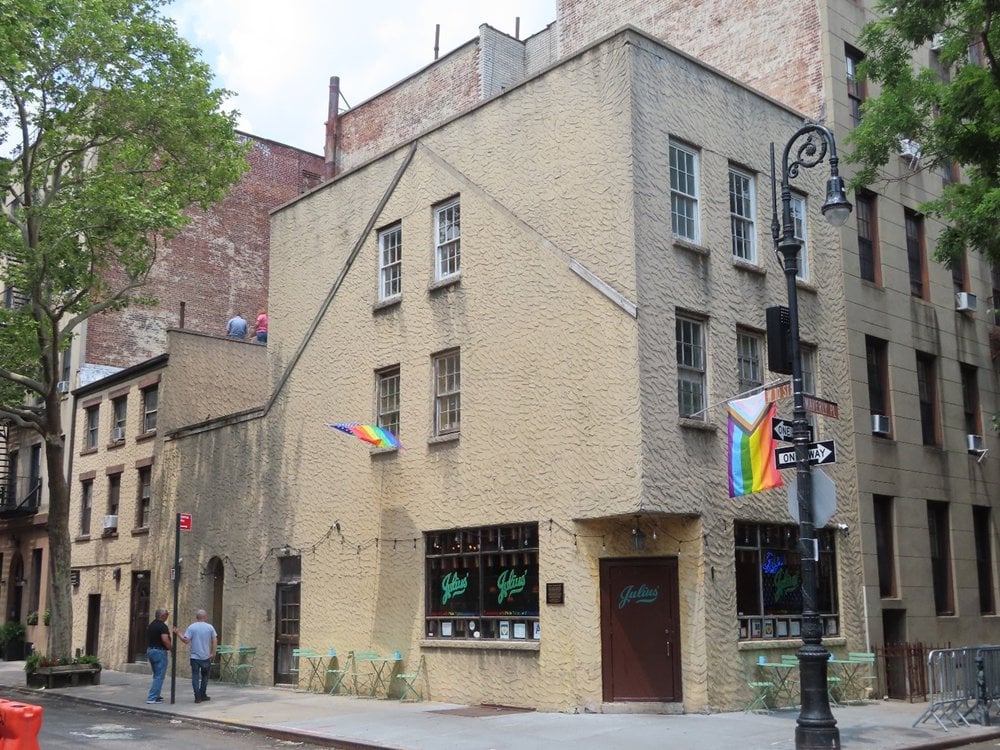:focal(748x563:749x564)/https://tf-cmsv2-smithsonianmag-media.s3.amazonaws.com/filer_public/62/58/6258cddd-1598-4a2f-86be-893ba53889a1/julius-bar.jpeg)
In New York City’s West Village, Julius’ Bar is tucked into the first floor of an unassuming beige stucco building. Passersby may notice the rainbow flags in the window—but they may not realize they’re walking past a new historic landmark. The bar is the site where three activists staged a simple act of protest in 1966: openly announcing they were gay, then ordering a drink.
They called it a “sip-in,” and the three men, members of the Mattachine Society, an early gay-rights group, were hoping to challenge the New York State Liquor Authority’s ban on serving LGBTQ patrons. A bar could be raided, and its liquor license rescinded, for serving gay customers, who were considered “disorderly” under the rule.
Due in part to this lesser-known but pivotal protest, the New York City Landmarks Preservation Commission officially designated Julius’ as a historic landmark last week. One of the city’s oldest gay bars, Julius’ had already been added to the National Register of Historic Places in 2016—along with nearby Stonewall Inn, the site of the famous 1969 protests that helped spark the American LGBTQ rights movement.
The sip-in at Julius’ took place on April 21, 1966, a few years before Stonewall. Dick Leitsch, Craig Rodwell and John Timmons went to several establishments, announced themselves, and asked to be served. The first bar on their planned circuit, the Ukrainian-American Village Restaurant, knew of the protest and closed early; it had a sign in the window that read, “If you are gay, please go away,” as the New York Times’ Thomas A. Johnson wrote in a 1966 story about the incident. In the second, a Howard Johnsons Restaurant, manager Emile Varela served them promptly without protest. “I drink,” he told the Times, “and who’s to say whether I’m a homosexual or not.”
At the time, Julius’ “was a rather dull neighborhood place which was about three-quarters gay,” Randy Wicker, who joined the other three later that day, told the Times’ Jim Farber in 2016. “I called it a closet-queen bar.”
But when the men arrived at Julius’ and announced that they were gay, the manager refused to serve them. “I think it’s the law,” he said, per the 1966 Times story.
After this incident, the group took their case to court—and won. A year after the protest, the courts ruled that “indecent behavior” needed to be “more than same-sex ‘cruising,’ kissing or touching,” as the National Park Service puts it.
“Julius’ history is particularly special because it really embodies so many different important threads of Greenwich Village history, LGBTQ history, civil rights history and activism,” Andrew Berman, the executive director of the organization Village Preservation, tells Curbed’s Matthew Schneier. “The sip-in in particular struck us as something that was so profoundly ahead of its time and didn’t really have the attention and due that it deserved.”
Activists hope that the landmark designation will help the bar stay open for years to come—and help cement the story of the sip-in as a critical act of protest.
Eric Adams, mayor of New York City, says in a statement from the Landmarks Preservation Commission that Julius’ holds both national and local significance.
The new landmark status “marks not only [the protest] but also Julius’ half-century as a home for New York City’s LGBTQ+ community,” he says. “Honoring a location where New Yorkers were once denied service solely on account of their sexuality reinforces something that should already be clear: LGBTQ+ New Yorkers are welcome anywhere in our city.”
Recommended Videos








